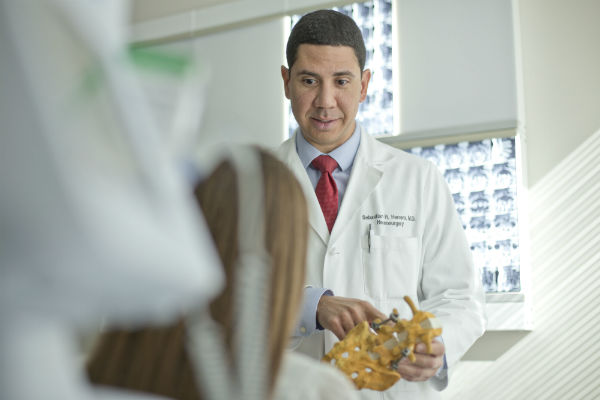
Spinal stenosis most often results from a gradual, degenerative aging process. Either structural changes or inflammation can begin the process.
Lumbar Stenosis Symptoms
The space within the spinal canal may narrow without producing symptoms. Some symptoms may include:
- Numbness, weakness, cramping or general pain in the arms and legs
- Pain radiating down the leg (sciatica)
- Problems with bowel and bladder function in more severe cases
- Problems with sexual function
- Foot disorders in more severe cases
Lumbar Stenosis Treatment
Your doctor may use a variety of approaches to diagnose spinal stenosis and rule out other conditions prior to treatment.
- Flexing exercises
- Medications. Your doctor may prescribe one or more of the following conservative treatments:
- Nonsteroidal anti–inflammatory drugs (NSAIDs), such as aspirin, naproxen, ibuprofen, or indomethacin, to reduce inflammation and relieve pain
- Analgesics, such as acetaminophen, to relieve pain
- Corticosteroid injections
- Anesthetic injections
- Restricted activity
- Physical therapy
- Lumbar brace
- Surgery
Contact Us
Please fill out the fields below, and we will contact you.